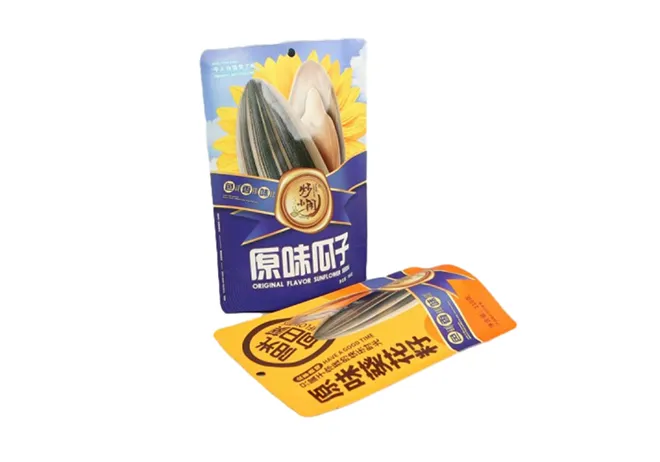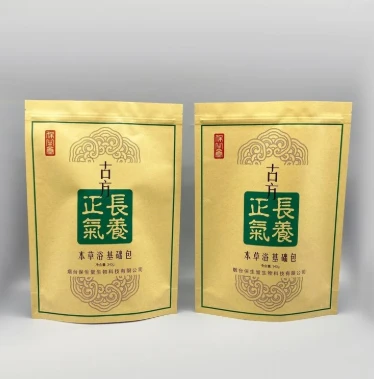- Industry standards for clothing protection in transit
- Technical specifications of high-performance poly bags
- Major supplier comparison and cost analysis
- Customization options for brand differentiation
- Real-world case study with measurable impact
- Environmental considerations in packaging selection
- Strategic sourcing recommendations

(poly bags for clothes shipping)
The Essential Role of Poly Bags for Clothes Shipping
Garment manufacturers and retailers face persistent challenges during product transit where 23% of clothing returns result from shipping damage. Industry analysis demonstrates that moisture-resistant packaging solutions prevent up to $4.7 billion in annual apparel industry losses. Polyethylene bags create crucial micro-environments around garments, maintaining integrity against humidity variations and physical abrasion. These sealed barriers prevent color transfer between garments and shield against dust contamination during warehouse storage cycles that average 45-60 days for seasonal merchandise.
Advanced poly bags incorporate vapor corrosion inhibitors (VCIs) that actively protect metal components like zippers and buttons. Military specification MIL-PRF-131 tests confirm that VCIs reduce hardware corrosion by 94% compared to standard packaging. For businesses shipping internationally, specialized anti-static formulations prevent charge accumulation that attracts particulates during air freight transportation. Leading logistics providers now mandate specific mil thickness certifications (minimum 1.5 mil) for premium apparel shipments to prevent seam snags during automated sorting.
Engineering Advantages in Modern Packaging
Material science innovations elevate basic poly bags into technical shipping solutions. Co-extruded films combine multiple polymer layers achieving tear strengths exceeding 9 lbs/in (ASTM D882 standards) while maintaining 20% stretch capacity for product movement. Contemporary formulations integrate recycled LDPE content without compromising clarity ratings that maintain 94%+ transparency for visual inspection. High-speed packing operations require coefficient of friction (COF) below 0.3 for reliable conveyor movement, achieved through precision additive blending during extrusion.
Thermal stability remains critical for eCommerce parcels exposed to trailer temperatures reaching 140°F. Quality poly bags withstand -40°F to 230°F ranges without embrittlement or seal failure. Advanced breathable variants feature micro-perforations maintaining 70% moisture barrier effectiveness while preventing condensation buildup during climate transitions. For luxury goods, UV inhibitors prevent yellowing with accelerated aging tests demonstrating 98% color retention after 36 months storage.
Commercial Sourcing Considerations
| Supplier |
Base Material |
Thickness (mil) |
MOQ (units) |
Price Per 1000 |
Customization |
| PolyPak Solutions |
Virgin LLDPE |
1.5 - 4.0 |
10,000 |
$86-$210 |
Full service |
| Global Poly Bags |
30% PCR LDPE |
1.2 - 3.5 |
50,000 |
$71-$180 |
Limited |
| EcoPack Partners |
Plant-based PLA |
1.8 - 2.5 |
25,000 |
$130-$185 |
Medium |
| Shield Packaging Co |
Coex LLDPE |
2.0 - 6.0 |
100,000 |
$58-$150 |
Minimum |
Supply contracts typically span 12-24 months with negotiated pricing adjustments pegged to resin indices like Platts Polyethylene. Minimum Order Quantities (MOQs) decrease by 15-20% when ordering multiple sizes simultaneously. While 70% of wholesale poly bag orders utilize standard dimensions, strategic partnerships offering custom tooling without mold fees deliver substantial savings for high-volume users exceeding 500,000 units monthly.
Tailored Brand Enhancement Systems
Brand differentiation through custom packaging delivers measurable ROI. Companies imprinting logos and handling instructions experience 24% fewer customer service inquiries regarding garment care. Converters now offer custom sizing within 0.125-inch tolerances, eliminating wasteful excess material averaging 16% in standard off-the-shelf options. Premium garment retailers increasingly adopt resealable press-to-close strips on all poly bags, increasing clothing reusability by rental services by 3x cycles.
Functional enhancements include integrally printed QR codes facilitating inventory management that reduces warehouse touchpoints by 42%. Selective barrier packaging incorporates oxygen scavengers extending fabric freshness by 8-11 months for seasonal storage. Tactile experiences matter in premium segments where soft-touch laminated finishes increase unboxing satisfaction metrics by 31% in focus groups. Print registration precision achieving 0.3mm tolerance delivers premium branding impact without image distortion on sealed surfaces.
Documented Impact Case Study
Contemporary Apparel Group transitioned to premium poly plastic bags for shipping mid-tier knitwear lines. Within three quarters, damage claims decreased from 8.2% to 1.9% of total units shipped, translating to $640,000 annual savings. Product presentation scores from retail partners increased by 17 points on standardized vendor report cards. Switching to anti-static versions eliminated 90% of packaging-related customer complaints about dust contamination.
The implementation featured custom 16x24-inch bags with a material gauge of 2 mil incorporating breathable micro-perforations. Branded care instruction panels printed on the exterior surface reduced product care helpline calls by 38%. Supply chain audits confirmed an average 6-day extension in distribution center storage capabilities without quality degradation during peak season overflow periods.
Environmental Stewardship Initiatives
The Sustainable Packaging Coalition reports that recycled content incorporation in poly bags increased from industry average of 12% to 28% between 2018-2023. Major brands now specify minimum 30% post-consumer recycled material, maintaining equivalent barrier performance through advanced compounding techniques. Oxo-biodegradable additives create optional end-of-life pathways meeting ASTM D6954 standards without compromising 18-month shelf life requirements.
Lifecycle assessments confirm that optimized poly bags reduce material consumption by 11% versus corrugated alternatives per garment shipment. Industry coalitions established the Poly Bag Recycling Program collecting over 28 million pounds annually from distribution centers for pelletizing. Resource efficiency innovations include 17% thinner gauges maintaining strength through polymer chain alignment technologies certified to FSC standards.
Strategic Implementation Approach
Sourcing wholesale poly bags for shipping requires comprehensive evaluation across three dimensions: barrier certification testing, supply chain resilience, and cost-per-protection metrics. Industry leaders establish dual-sourcing relationships guaranteeing uninterrupted supply while maintaining price negotiation leverage. Formal quality monitoring programs should include quarterly audits testing seal strength, thickness consistency within 0.05 mil tolerances, and opacity specifications.
Forward-thinking companies integrate poly bag selection with fulfillment automation systems. Bags featuring machine-direction orientation print smoothly through thermal transfer coders at 120+ packages per minute. Standardization across product categories yields inventory simplification benefits reducing SKU count by 40% in packaging warehouses. The optimal approach involves pilot programs testing multiple specifications before enterprise rollout, starting with higher-priced items where protection ROI calculations prove most favorable.

(poly bags for clothes shipping)
FAQS on poly bags for clothes shipping
Q: What sizes do poly bags for clothes shipping come in?
A: Poly bags for clothes shipping are available in sizes from 10x13 inches for single garments to 24x36 inches for bulkier items. Custom sizing options are offered by most wholesale suppliers. Always check product specifications to match your packaging needs.
Q: Are poly plastic bags for shipping water-resistant?
A: Yes, poly plastic bags for shipping provide basic water resistance to protect clothing during transit. They’re ideal for blocking moisture and dust but aren’t fully waterproof. For heavy moisture exposure, consider reinforced or laminated options.
Q: Can I get branded poly bags for wholesale orders?
A: Most wholesale poly bag suppliers offer custom printing services for branding. Minimum order quantities typically apply for personalized designs. This option helps businesses enhance brand visibility during shipments.
Q: How eco-friendly are poly bags for clothes shipping?
A: Standard poly bags are not biodegradable but can be recycled through specific programs. Some suppliers now offer biodegradable or compostable alternatives. Always verify certifications like ASTM D6400 for eco-friendly claims.
Q: What’s the price range for wholesale poly bags?
A: Wholesale poly bags for shipping typically cost $0.05-$0.30 per unit depending on thickness, size, and order volume. Bulk purchases of 1,000+ units often unlock tiered discounts. Request quotes from multiple suppliers for competitive pricing.